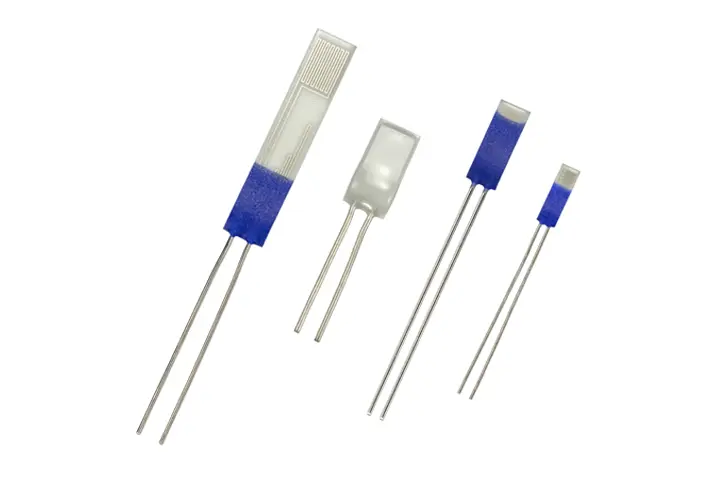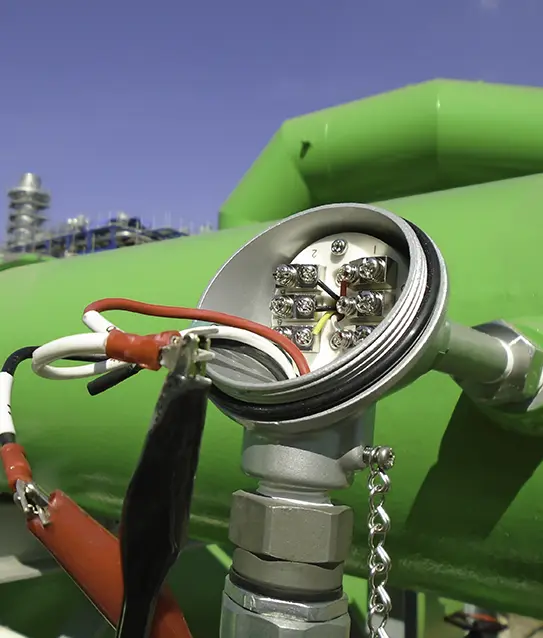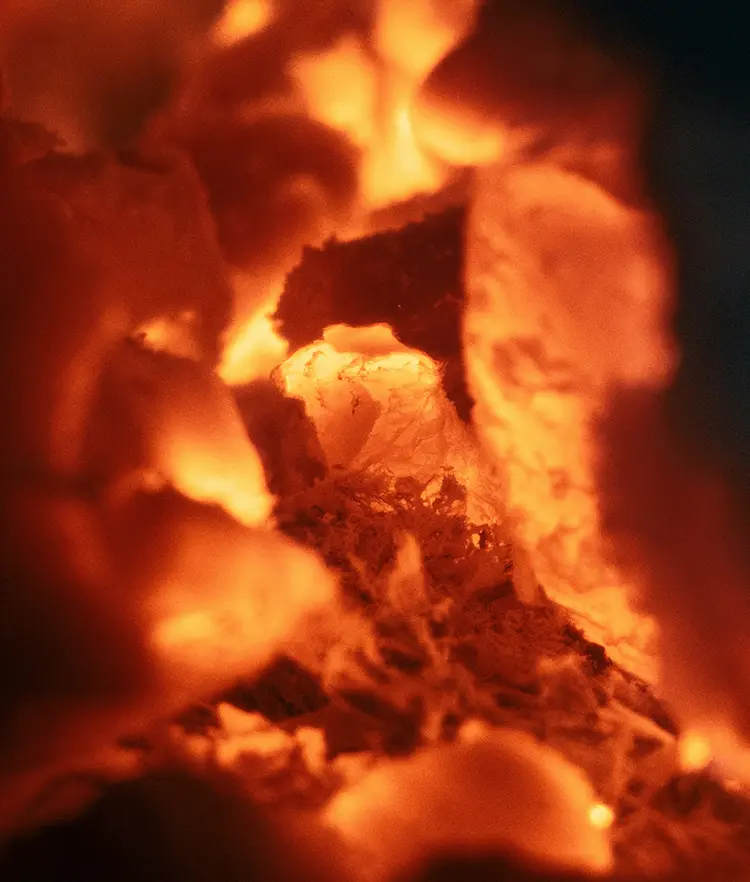Accurate, reliable, and versatile temperature measurement solutions
RTD sensors
Platinum RTD’s, allow for accurate sensing at temperatures from -200°C up to + 850°C and are used in temperature probes, in measuring instruments and systems and also in electronic equipment.
Platinum has high temperature capability, excellent chemical resistance, biological inertness, and long-term electrical stability, making it a natural choice as the base material for temperature measurement resistance elements. Due to these properties, platinum (Pt) measurement resistors with resistances of 100, 200, 500, and 1,000 ohms offer significant advantages compared to competing sensors, such as semiconductor sensors (KTY®) or thermistors (NTC).
Product summary
- High precision
- Low drift
- Long service life
- Nearly linear characteristic
- Standardised characteristic line assures sensor interchangeability
- Fast response time
- High resistance to thermal shock
The available types of RTD sensors
Thin film sensors
- Are the most broad spectrum, economical platinum RTD sensor
- Thin films are the flattest temperature sensor, give a fast response time and are durable and have a high vibration resistance
- Available in resistance values: Pt50, Pt100, Pt200, Pt500, Pt 1000
- Often chosen in high vibration applications such as aerospace and automotive industries
Ceramic wire wound sensors
- Are suitable for the thinnest RTD mineral insulated cables
- Ceramic wire wounds operate at a wide temperature range and have a high level of resistance to thermal shock
- Available in resistance values of Pt100 and Pt50
- Can be used for measurements in extremely high temperature environments, up to 850 °C. Often used in industries such as chemical and power generation
Cryogenic platinum cobalt resistance sensor
- Designed for temperatures below 73K (-200°C) to 1.5K (-271°C).
- Developed in partnership with Okazaki, incorporating aerospace technology for high precision.
- Features include high vibration resistance, excellent repeatability, and measurement capability at very low temperatures.
- Available in two resistances, Pt100 and Pt1000, with detailed temperature-resistance tables provided.
- Compared to silicon diodes, it offers higher accuracy and is less influenced by magnetic fields.
Stator slot sensor
- Ability to detect localized hotspots in windings.
- High resistance to vibration and tolerance to high pressure environments.
- Available resistances of Pt1000, Pt500 and Pt200
- Common diameters are between 8-12mm
- Available with silver, nickel or tin plated copper lead wires in a variety of AWG sizes.
- Certified “intrinsically safe” and “increased safety” models for hazardous, explosive environments.
SMD platinum sensors
- SMDs are specifically designed to fit on PCBs (printed circuit boards)
- Form the active measurement element on a PCB
- Are mainly used in electronics industry or the semi-conductor industry
Other RTD product needs?
Contact Kamet to discuss the other RTD products from various brands that you might need. We work with a broad range of international manufacturers and are happy to help you find the right product.
Get in contactWhy choose RTD Sensors?
RTD stands for Resistance Temperature Detector, a type of sensor used to measure temperature by detecting changes in electrical resistance. It typically uses metals like platinum, nickel, or copper, with platinum being the most common due to its stability and accuracy.
The principle behind RTDs is that a metal’s resistance increases as its temperature rises. This happens because higher temperatures cause more atomic vibrations, which interfere with the flow of electrons. By measuring the change in resistance, the corresponding temperature can be accurately determined.
One of the most widely used RTDs is the Pt100 sensor, which has a resistance of 100 ohms at 0 °C. Pt100 sensors offer excellent accuracy and a relatively linear response over a wide temperature range, typically from -200 to +850 °C, depending on the sensor type and class.
RTDs are commonly used in industrial, scientific, and environmental applications where precise temperature measurements are required.
Platinum versus nickel resistor
Platinum RTD sensors are most often used because platinum has a near linear resistance versus temperature gradient. But also nickel resistors are available.
Platinum resistors have practically taken over as a resistance material in industrial measurement.
The biggest advantage brought by these resistors is their high chemical resistance and the fact that the material is relatively easy workable. Platinum is also wildly available in highly refined form.
The interchangeability of the platinum temperature sensors is unmatched by other temperature sensors. This is due to the properties of a platinum temperature sensor which are specified in the European standard EN 60 751.
Nickel resistors are also commonly used asresistance material. The price advantage compared to platinum is significant. However the measurement range of a nickel temperature sensor is limited from -60°C to +250°C. The characteristics of these nickel sensors are laid down in DIN 43 760 (no longer valid) and the characteristics are also usually specified by the manufacturer.
Why choose Kamet for your platinum sensors?
Ultimately the choice of an RTD sensor depends on many specifics. Kamet has been in the high temperature world for many years and has extensive knowledge of the industry and the latest developments. The fact that we supply four different types of platinum temperature sensor makes us your ideal advisor and supplier.
Kamet’s commitment to quality is reflected by the choice to partner with expert suppliers in the field:
- YAGEO Nexensos for SMD and thin film sensors
- Okazaki Manufacturing Company for the cryogenic sensors
- Sensor Technology for ceramic wire wound sensors


Download the RTD elements brochure
Consult our RTD elements brochure for a complete overview of our RTD sensor solutions.
"*" indicates required fields
More knowlegde about RTD sensors

Why choose RTD sensors: types, properties, and applications

Accuracy of RTD sensors (Pt100): classes and tolerances explained

Choosing the right RTD sensor: A guide to thin-film, ceramic wire wound, and SMD platinum Elements

Choosing between Pt SMD and NTC SMD sensors: key differences and when to use each

Applications and construction of SMD sensors for temperature measurement

Why choose a 2-wire, 3-wire or 4-wire RTD configuration?

